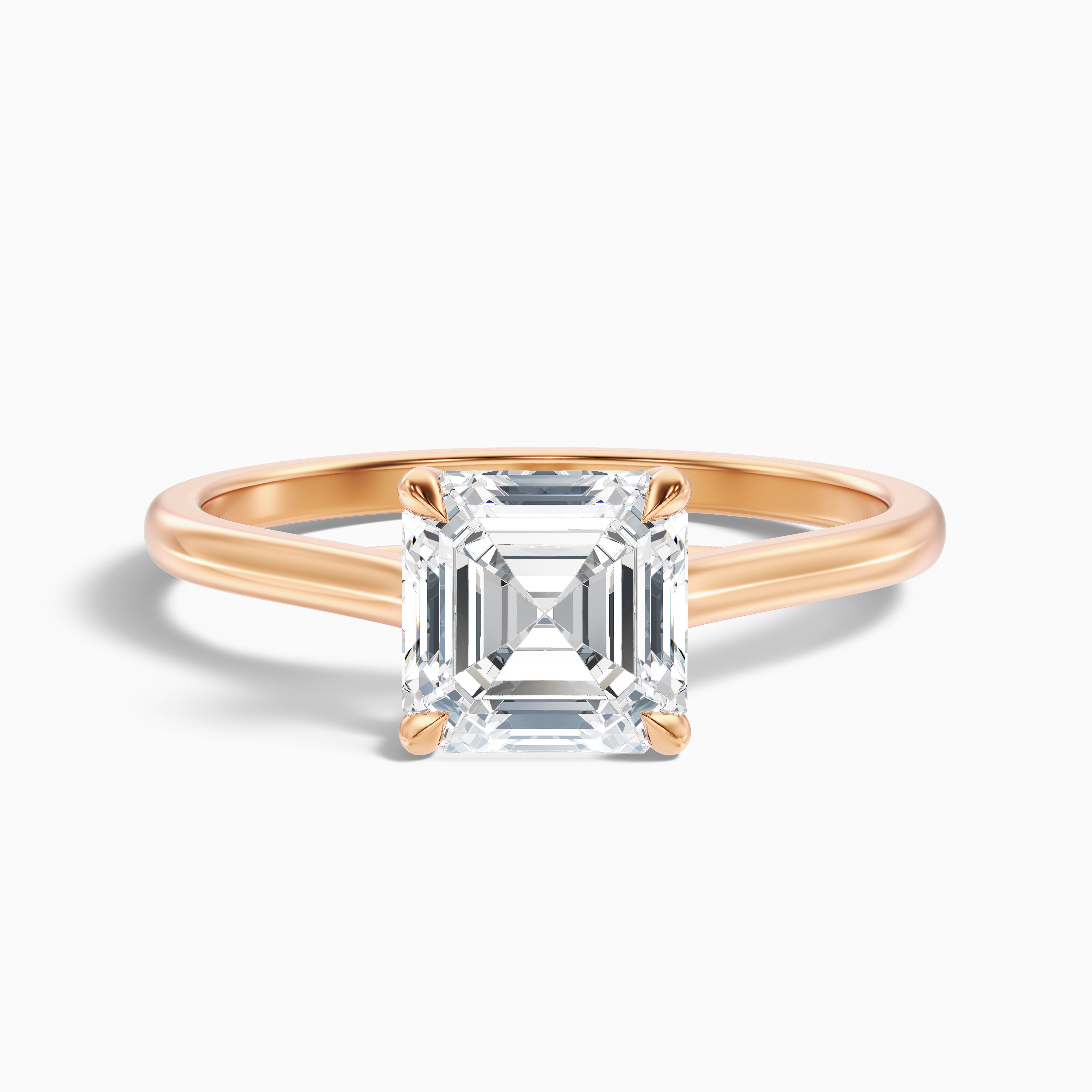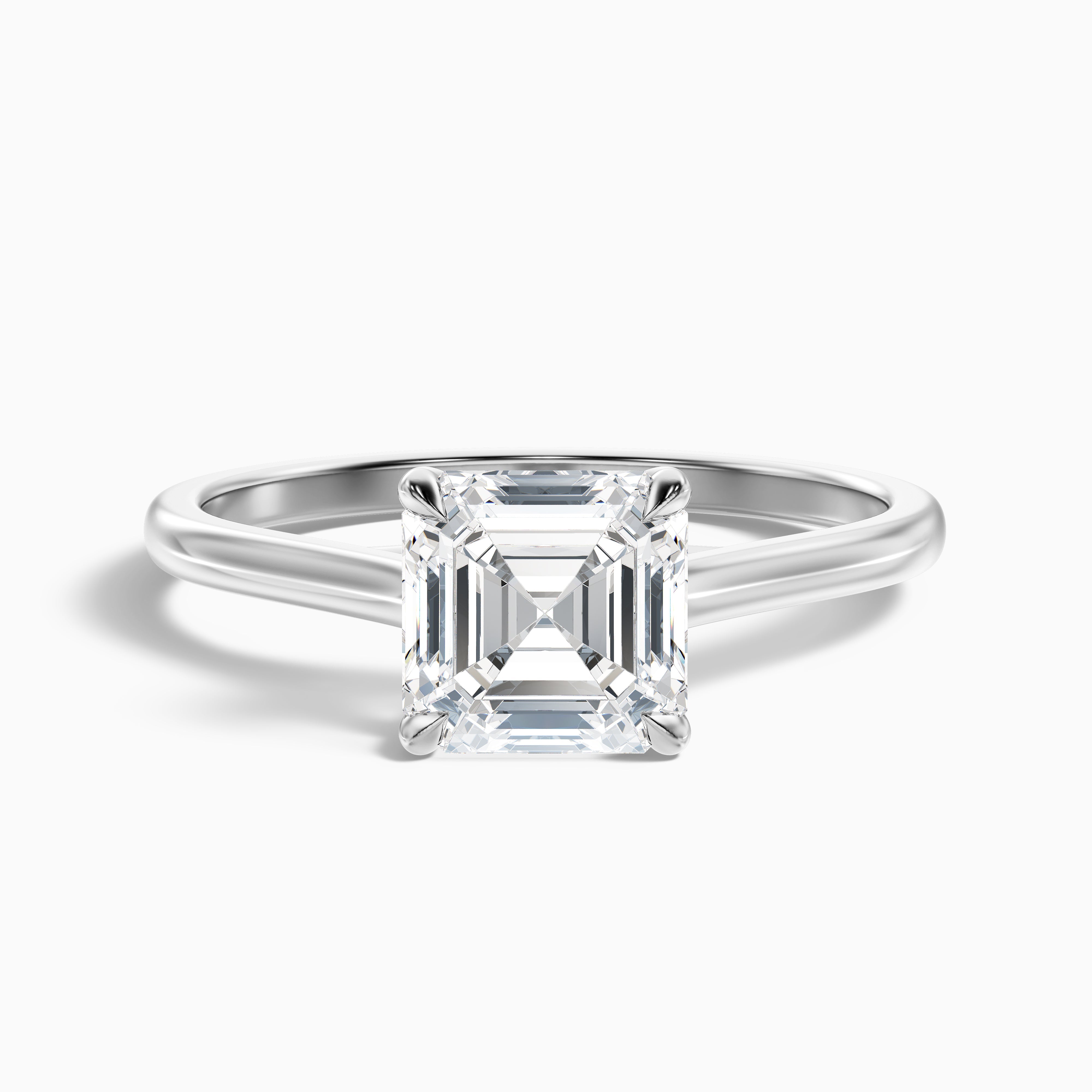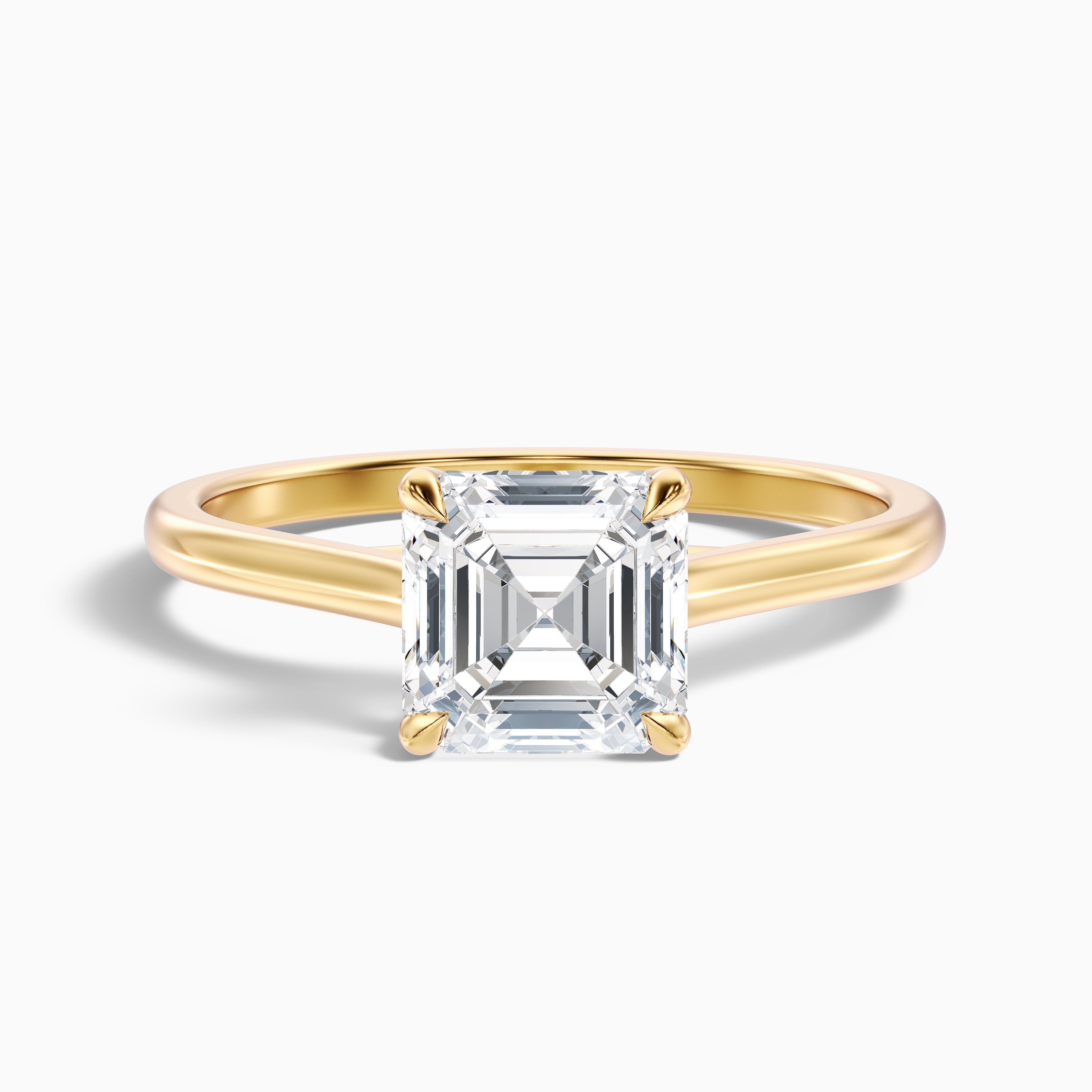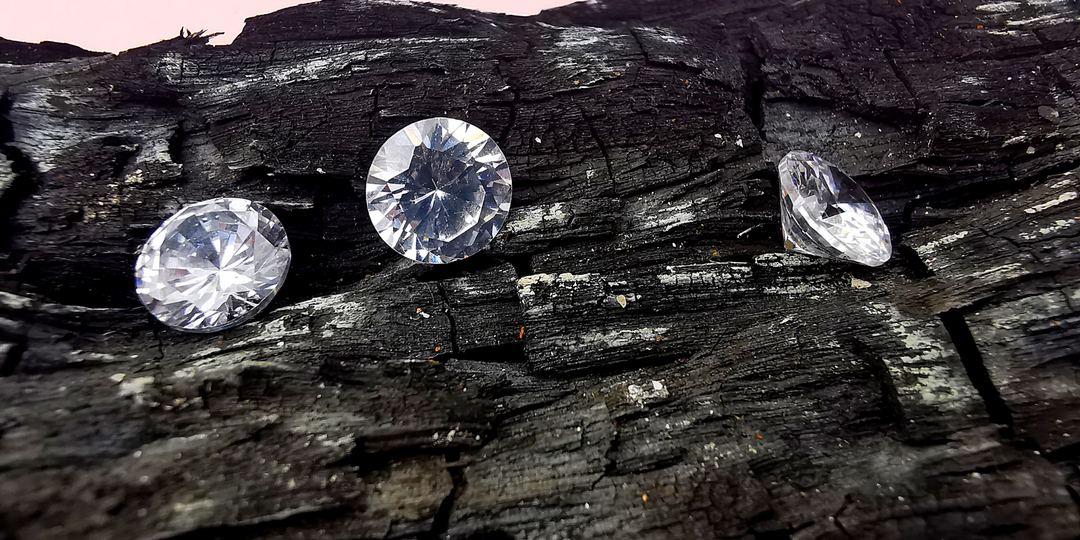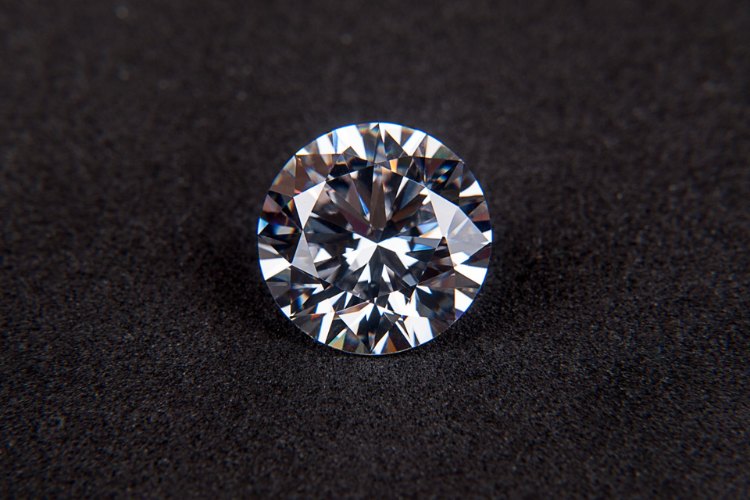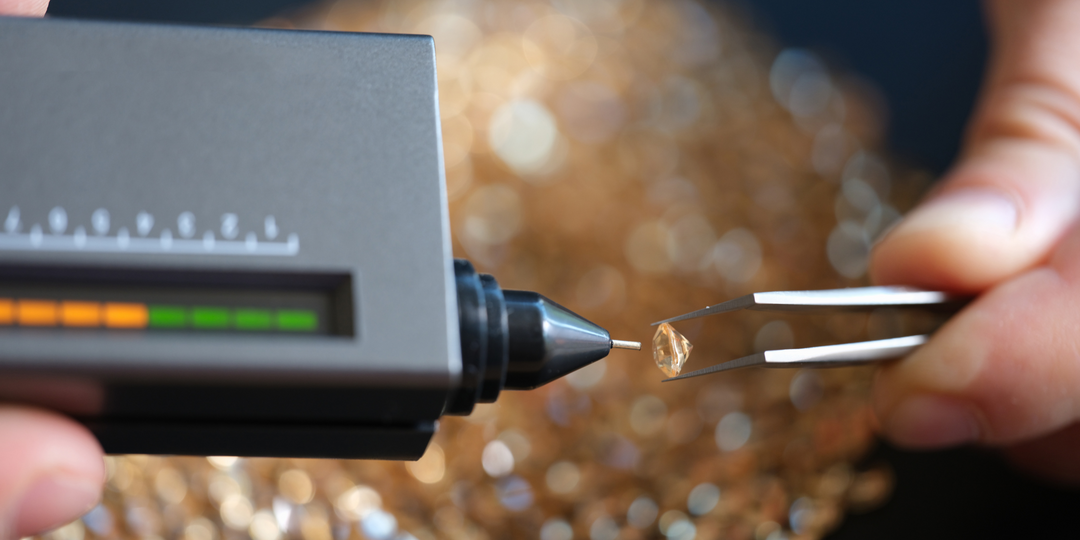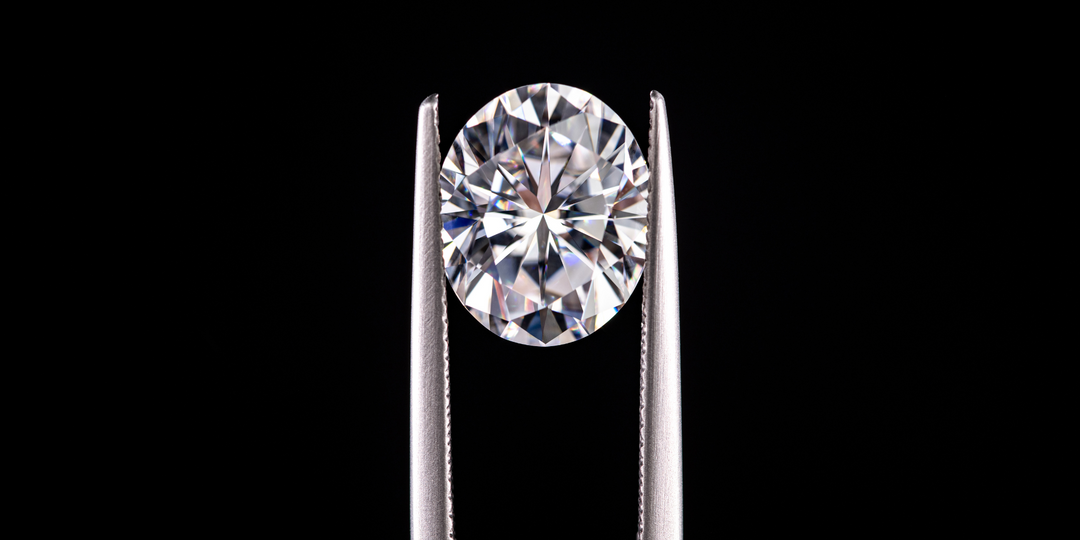The Ultimate Guide to Asscher Cut Diamond Rings
Looking for a diamond ring that's both classic and unique? Then you absolutely have to check out Asscher cut diamonds. They've got this vintage vibe with a modern twist that's just captivating. They’re not as common as round brilliants, which makes them even more special.
In this guide, we're diving deep into everything you need to know about Asscher cuts from the fascinating history of the Asscher cut to the best settings to show them off, and even how they compare to other popular cuts. So, if you're ready to become an Asscher aficionado, keep reading!
The History of Asscher Cut Diamonds
Ever wonder where this distinctive cut came from? Well, let's take a trip back in time to 1902. Joseph Asscher, a master diamond cutter from the Royal Asscher Diamond Company (still around today, by the way!), patented the original Asscher cut. It was a variation of the square emerald cut, designed to maximize brilliance and clarity in the rough diamond. Before this, cutting techniques weren't as refined, and the Asscher cut was a real innovation.
These diamonds were hugely popular during the Art Deco era of the 1920s, known for their geometric shapes, bold designs, and clean lines. Think glamorous parties, flapper dresses, and… you guessed it, Asscher cut diamonds sparkling under the chandeliers. They were the statement piece for the stylish woman.
Interestingly, the Asscher cut faded a bit in popularity for a while after World War II, as other cuts, like the round brilliant, gained prominence. But it's made a serious comeback in recent years, starting in the late 1990s and early 2000s. People are drawn to its vintage charm and unique appeal. It's a testament to the enduring beauty of classic design, proving that some things never truly go out of style.
What Makes Asscher Cut Diamonds Unique?
So, what exactly is it about the Asscher cut that makes it so special? It's all in the facets, and how they interact with light. Unlike the brilliant cuts (like round or princess), which are designed to maximize sparkle (that intense white light return), the Asscher cut has a "hall of mirrors" effect.
Cut Quality & Proportions
Imagine looking down into a perfectly symmetrical square with step-cut facets that create these mesmerizing concentric squares. That's the Asscher cut. It's like looking into an endless reflection. For Asscher cuts, an ideal table percentage falls between 60% and 70%. while an ideal depth percentage for Asscher cuts is between 60% and 67%. Asscher cuts are square or nearly square.
The ideal length-to-width ratio is between 1.00 and 1.05. Any ratio outside this range may result in a diamond that appears noticeably rectangular. These proportions are absolutely crucial. When they're just right, you get that incredible "hall of mirrors" effect. If the cut is off, the diamond can look dull, lifeless, or even dark in the center. It won't have that captivating depth.
Clarity & Inclusions
Because of those large, open facets, clarity is super important with Asscher cuts. Inclusions (internal flaws) are more easily visible than in brilliant cuts where the facets can mask them. So, you'll generally want to aim for a higher clarity grade. VS1 or VS2 is often a good balance of value and appearance, but if you're particularly sensitive to any imperfections, you might consider even higher. It's worth noting that very small inclusions that aren't visible to the naked eye won't impact the diamond's beauty.
However, it's important to remember that clarity is just one factor to consider. The size, type, and location of inclusions also play a role in how they affect the diamond's appearance. Some SI1 or even SI2 Asscher cuts may have inclusions that are not visible to the naked eye, especially if the inclusions are small, light in color, or located near the edges of the diamond.
Color Considerations
Because Asscher cuts have a large table and step-cut facets, they tend to show color more readily than brilliant cuts. This means that any tint in the diamond will be more easily visible. Therefore, it's generally recommended to choose an Asscher cut diamond with a color grade of H or higher.
However, the ideal color grade for you will depend on your preferences and the setting you choose. If you prefer a truly colorless look, you'll want to stick with D, E, or F color grades. If you're setting the diamond in yellow or rose gold, you can often go down to a J or even K color grade without noticing much of a tint, as the metal will help to mask the yellow.
Fluorescence is another factor that can affect a diamond's color appearance. Some diamonds emit a soft glow when exposed to ultraviolet (UV) light. While fluorescence is not inherently bad, it can sometimes make a diamond appear hazy or oily, especially in higher color grades. In lower color grades, fluorescence can actually help to mask some of the yellow tint.
Best Settings for Asscher Cut Diamond Rings
Now, let's talk about settings. The right setting can enhance the beauty of an Asscher cut diamond.
Solitaire Setting
This classic setting puts all the focus on the Asscher cut's distinctive shape and step-cut facets. It allows maximum light to enter the diamond, enhancing its brilliance and "hall of mirrors" effect.
Variations:
-
Prong Setting: Typically uses four prongs to securely hold the diamond. This is a popular choice as it minimizes metal coverage and allows for maximum light return.
-
Bezel Setting: A metal rim surrounds the diamond, offering excellent protection and a sleek, modern look. This can slightly reduce light performance but is a good option for those with active lifestyles.
Pave Setting
Small diamonds are set along the band, adding extra sparkle and enhancing the center stone. This creates a dazzling and luxurious look. Ensure the pave stones are well-matched in color and quality to the center stone.
Halo Setting
A halo of smaller diamonds surrounds the Asscher cut, making it appear larger and adding significant brilliance. This setting also provides a beautiful contrast between the clean lines of the Asscher cut and the sparkle of the halo.
Variations:
-
Single Halo: A single row of diamonds surrounds the center stone.
-
Double Halo: Two rows of diamonds create an even more dramatic effect.
Three Stone Setting
This setting typically features an Asscher cut center stone flanked by two smaller diamonds (often baguettes or trapezoids). It represents the past, present, and future, making it a meaningful choice for engagement rings. Pay attention to the shape and size of the side stones to ensure they complement the Asscher cut and create a balanced look.
Pros and Cons of Asscher Cut Diamonds
Like any diamond cut, Asschers have their own set of pros and cons.
Pros:
-
Unique and distinctive look: You're not going to see this cut on every other hand.
-
Elegant and sophisticated: It has a timeless appeal that transcends trends.
-
Durable due to its cut: The cropped corners make it less prone to chipping than some other square cuts.
-
Often appears larger than a brilliant cut of the same carat weight: Due to its deeper cut.
Cons:
-
Shows inclusions more readily: Requires careful attention to clarity.
-
Can be more expensive than some other cuts: Due to the precision required in cutting.
-
May not have the same level of brilliance as round brilliant cuts: But it has its own unique light performance.
Asscher Cut Vs. Other Cuts
Here's a table that provides an in-depth comparison:
| Feature | Asscher Cut | Round Brilliant | Princess Cut | Cushion Cut | Emerald Cut |
|---|---|---|---|---|---|
| Shape | Square | Round | Square or Rectangular | Square or Rectangular | Rectangular |
| Cut Style | Step-cut (concentric rows of facets) | Brilliant cut (designed for maximum sparkle) | Brilliant cut (modified square) | Modified brilliant or mixed cut | Step-cut (long, rectangular facets) |
| Brilliance | High (distinct flashes of white light) | Very High (maximum sparkle) | High (bright and lively) | Moderate to High (softer sparkle) | Moderate (subtle flashes of light) |
| Fire | Moderate (colored light dispersion) | Very High (strong colored light flashes) | High (vibrant colored light flashes) | Moderate (softer colored light flashes) | Moderate (less colored light dispersion) |
| Clarity Emphasis | High (inclusions more visible) | Moderate (better at hiding inclusions) | Moderate (good at hiding inclusions) | Moderate (can hide inclusions well) | High (inclusions more visible) |
| Color Emphasis | High (color more apparent) | Moderate (color less apparent) | Moderate (color less apparent) | Moderate (color less apparent) | High (color more apparent) |
| "Hall of Mirrors" Effect | Very Strong (distinctive layered look) | Minimal | Minimal | Minimal | Moderate (subtle layered look) |
| Popularity | Growing (vintage/Art Deco appeal) | Most popular (classic choice) | Second most popular (modern choice) | Increasing (vintage/romantic appeal) | Classic (understated elegance) |
| Price | Moderate to High | High | Moderate | Moderate to High | Moderate to High |
Conclusion
So, there you have it! Your ultimate guide to Asscher cut diamond rings. They're a truly special choice for anyone looking for a ring that's both timeless and unique. If you appreciate vintage charm with a modern edge, and you love that mesmerizing "hall of mirrors" effect, an Asscher cut might just be the perfect diamond for you.

